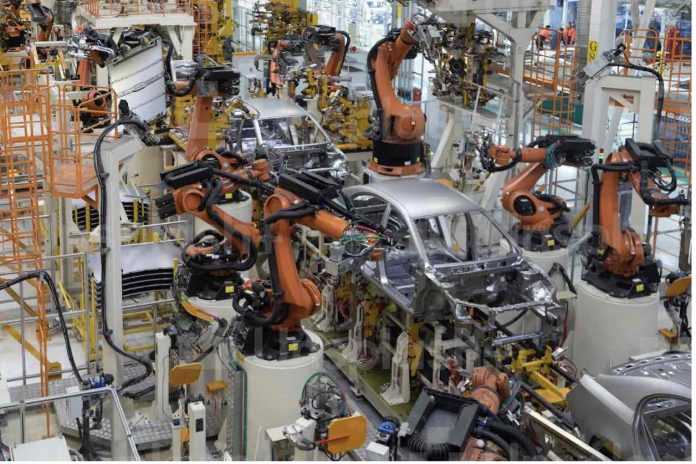The automotive industry has long been a part of the technological and industrial sectors, but it is changing quickly as a result of innovations such as self-driving cars, greater connectivity, and longer-range electrical models.
The automobile sector predicts considerable changes in the next ten years as a result of the world’s quick digitalization. These changes are the result of the increasing popularity of eCommerce trends. It is evident that the industry is constantly undergoing significant shifts, and as cutting-edge technology has transformed the lifestyles of many people, it has also sparked new needs in this sector as well.
Let’s take a look at the top 5 automotive industry trends that we can expect more of in the future.
AI in the automotive industry
AI in the automotive sector may soon have a big impact on how we develop, purchase, and operate our vehicles. The current partnership between Toyota and Nvidia serves as an illustration of the enormous future potential that the automotive industry sees in artificial intelligence, which combines hardware and software. Artificial intelligence may make autonomous, self-driving vehicles and smart transportation possible. These self-driving cars use sensors and software to navigate and control their movements.
To develop cutting-edge applications for this technology, manufacturers are already working with experts in the fields of artificial intelligence and machine learning. It’s crucial to keep in mind that this industry is still plagued by ethical and safety issues, and an AI-related safety incident could be the end of a manufacturer’s reputation.
This is one of the leading factors why consumers should already seek the latest and high-quality automotive intelligence platform in order for their purchases to be as easy as possible and to have a clear understanding of what they are buying.
Electric vehicles
The use of vehicles has greatly benefited humanity because it has made traveling very simple. However, a typical car emits roughly 4.6 metric tons of carbon dioxide annually, which could have a long-lasting negative effect on the environment and deplete priceless fossil fuel reserves.
Electric vehicles, on the other hand, are praised for their greater levels of energy efficiency, which result in reduced fuel consumption and harmful emissions. They are battery-operated and can be powered by clean energy derived from sustainable resources. In fact, a number of important automakers have jumped on board by developing their own electric cars.
Still, consumers’ concerns about electric vehicles persist. Price reductions are necessary for greater adoption. Infrastructure is also still insufficient, making it difficult to locate charging stations in rural areas.
Shared mobility
To lessen its carbon footprint, the shared mobility industry is growing in addition to electric vehicles. The sharing economy, which also includes coworking spaces and short-term leases, introduces shared mobility. In order to meet their transportation needs without using more than necessary, it encourages people to share their vehicles.
For instance, the Singaporean startup Beam promotes e-scooters. They offer integrated e-scooters to promote shared mobility. Users can find the closest Beam e-scooter using the official app, use it for transportation, and then leave it parked in an open spot where other users can see it.
Shared mobility systems will undoubtedly continue to exist and even flourish despite COVID-19’s unavoidable impact, albeit in more novel and creative ways.
Increased sales of pre-owned vehicles
The market for used cars is thriving at the moment. According to experts in the automotive industry, used car sales will increase by 9% between 2019 and 2025. The market for used cars is expanding, especially for vehicles purchased within the last four years. These cars are not only less expensive than new ones but they also embody many of the newest automotive technologies. Pre-owned electric and hybrid cars are also included here. There are many certified pre-owned vehicles in dealership inventories today that perform, feel, and look like new vehicles but cost much less.
Shorter model cycles
In the past, newer models were typically released 5 to 10 years after the original model.
Thanks to a recent shift in the automotive industry, this model cycle has been shortened to 1 to 2 years. In order to increase sales as more people upgrade their vehicles, automakers are now more likely to release newer models more frequently. This could imply that companies choose to market to more niche demographics with their most recent models, allowing them to meet their needs and adopt a customer-centric strategy.
However, the quickened pace might make it challenging for automakers to control development costs. It will take time to assess whether this trend will last over time because if the pace is accelerated, R&D costs will rise.
Final thoughts
Despite the challenges the automotive industry has faced recently, the trends we foresee developing will make it possible for companies to recognize and optimize larger-scale systems in product development, delivery, and usage. The industry will undoubtedly encounter new challenges, but in the end, that is how advancements are made.









